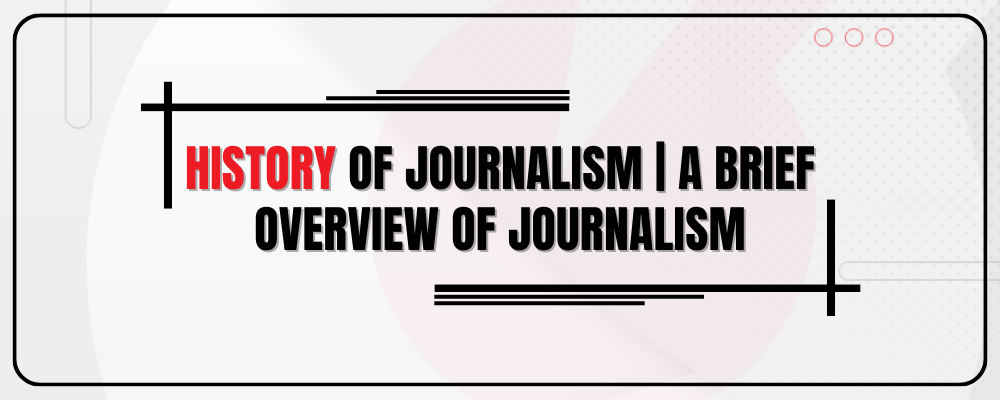Ancient Period Journalism
In the earliest human societies, information was primarily disseminated through oral traditions.
Storytellers, often individuals with a knack for memorization and narration, played a pivotal role in sharing news, myths, and historical events with their communities.
As societies developed written languages, they began to document important information on various surfaces such as stone, clay tablets, or papyrus.
These early forms of documentation laid the foundation for more organized and structured communication.
Medieval Period Journalism
During the medieval period, as monasteries became centers of learning, monks took on the task of copying and preserving manuscripts.
These handwritten documents often included news alongside religious texts. The dissemination of news was limited, and the content was often controlled by religious authorities or monarchies.
The invention of the printing press in the 15th century by Johannes Gutenberg marked a revolutionary shift, enabling the mass production of books, pamphlets, and newspapers.
17th Century – Birth of Newspapers
The 17th century saw the emergence of the first newspapers in Europe. “Relation,” a German publication, and “The Oxford Gazette” in England are among the earliest examples.
These newspapers were often sponsored or controlled by governments, focusing on official announcements, foreign news, and occasional commentary.
The circulation was limited, and readership was primarily among the elite.
18th Century – Journalism In The Age of Enlightenment
The Enlightenment period brought about a shift in the purpose of newspapers.
The idea of a public sphere, a space where citizens could engage in rational discourse on matters of public interest, gained prominence.
Newspapers like “The Spectator” in England provided a platform for essays and discussions, contributing to the exchange of ideas among the educated public.
This period marked a departure from state-controlled information towards a more inclusive and open discourse.
19th Century – Rise of the Penny Press and Investigative Journalism
The 19th century witnessed a democratization of information with the rise of the penny press.
Technological advancements, such as the steam-powered printing press, made newspapers more affordable and accessible to a broader audience.
Publications like “The New York Sun” pioneered sensational reporting to attract a mass readership.
Additionally, this century saw the emergence of investigative journalism, with reporters like Nellie Bly and Ida B. Wells exposing societal issues and corruption, paving the way for a more socially conscious form of journalism.
Civil War and Yellow Journalism
The American Civil War became a pivotal moment in journalism.
The telegraph allowed newspapers to provide more timely and detailed coverage of the conflict.
Post-war, the rise of yellow journalism, characterized by sensationalism and exaggerated stories, became prominent. Joseph Pulitzer and William Randolph Hearst engaged in fierce competition, employing attention-grabbing headlines and illustrations to boost circulation.
While criticized for their methods, these publications played a crucial role in shaping modern journalism’s commercial aspects.
20th Century – Radio, Television, and Broadcast Journalism
The 20th century brought significant technological advancements that transformed journalism.
Radio broadcasts became a primary source of news, especially during World War II, allowing for real-time reporting and commentary.
The 1950s and 1960s witnessed the dominance of television journalism, with iconic figures like Edward R. Murrow and Walter Cronkite becoming trusted sources of information for the American public.
Television brought a visual dimension to news reporting, influencing public perception and understanding of major events.
Watergate and Investigative Reporting
The 1970s marked a watershed moment with the Watergate scandal. Investigative reporting, led by journalists Bob Woodward and Carl Bernstein of “The Washington Post,” uncovered the extent of political corruption and cover-ups at the highest levels of government.
The reporting not only led to the resignation of President Richard Nixon but also demonstrated the power of investigative journalism in holding those in power accountable for their actions.
Digital Revolution – Internet and Online Journalism
The late 20th century and early 21st century witnessed the rise of the internet, revolutionizing the dissemination of news.
Online platforms allowed for real-time updates, breaking news, and a global reach. Traditional news outlets expanded their presence to the digital realm, while new forms of journalism, such as citizen journalism and blogging, gained prominence.
The internet facilitated a more interactive and participatory form of news consumption, but it also brought challenges such as misinformation and the decline of traditional business models for news organizations.
Challenges and Opportunities in the 21st Century
In the 21st century, journalism faces both challenges and opportunities. The proliferation of digital platforms has created a fragmented media landscape, with audiences navigating a vast array of sources for information.
Traditional news organizations grapple with economic challenges, as the shift to digital advertising has disrupted their revenue models.
However, the digital age also offers new avenues for storytelling, interactive journalism, and citizen journalism. Social media platforms, while providing opportunities for information dissemination, have also raised concerns about the spread of misinformation and the impact on journalistic credibility.
Key Points
From ancient oral traditions to the digital age, journalism has adapted to the needs and preferences of its audience.
While the medium and methods have transformed, the core principles of journalism—accuracy, fairness, and accountability—remain integral to the profession.






